Last updated on April 26, 2024
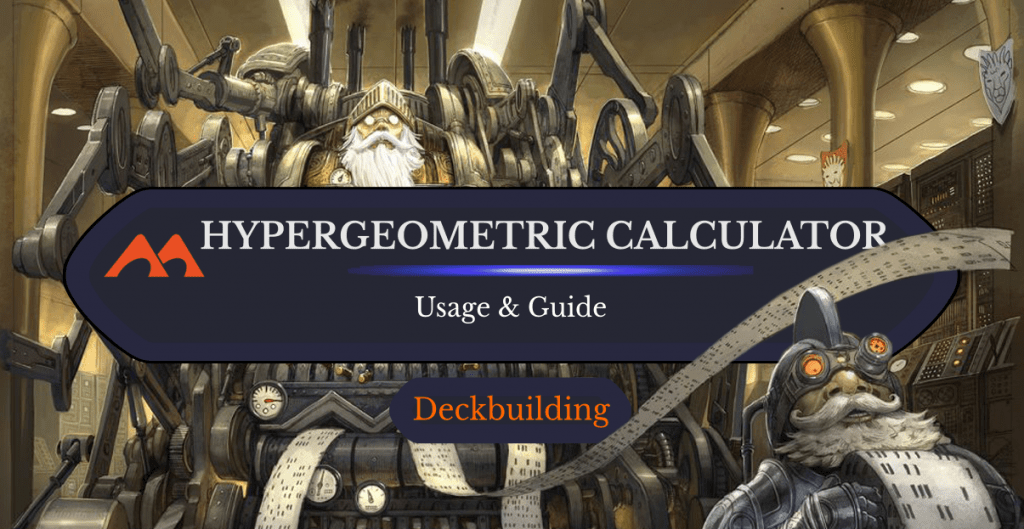
The Grand Calcutron | Illustration by Sean Murray
Today I’m going to talk about probabilities and MTG. A lot of players rely on their gut instincts to decide whether to mulligan a hand or which line to take, but many of these problems can be boiled down to a relatively simple equation.
Sometimes what “feels” right isn’t justified by the numbers, so it’s useful to know how to use hypergeometric calculation to determine your outs and its application to MTG. Don’t worry if you’re confused, I’ve got you covered.
Ready? Let’s get started!
Hypergeometric Calculator
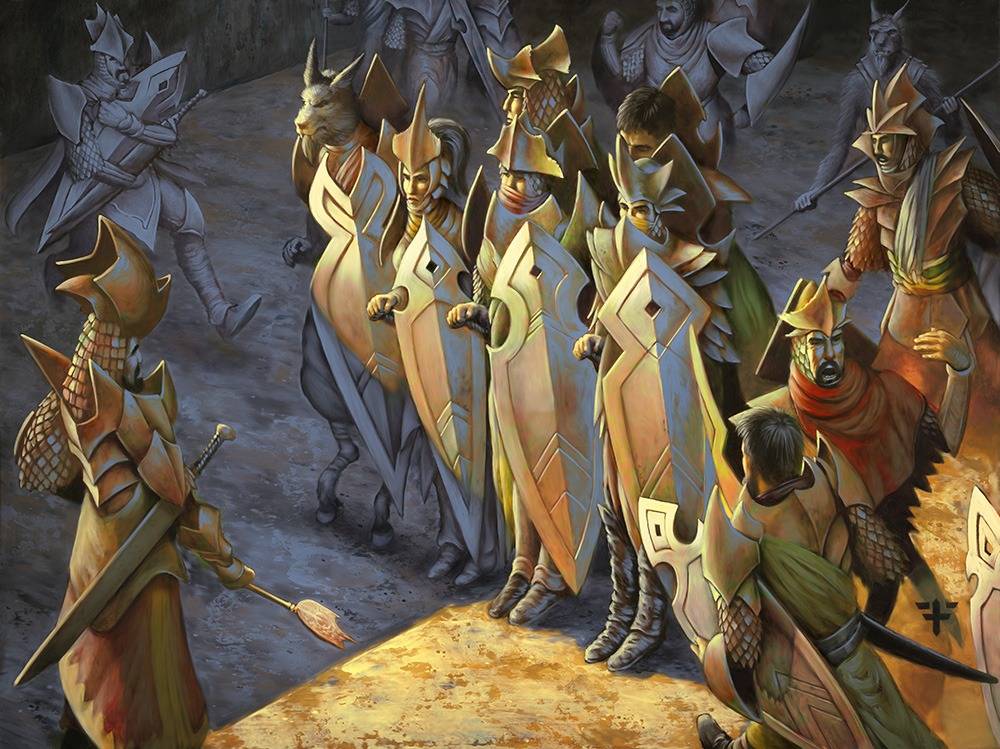
Collected Company | Illustration by Franz Vohwinkel
How Do You Use the Calculator for Magic?
The first time I saw the hypergeometric calculator I was intimidated, but with a little guidance I realized it’s a lot easier to use than it looks. Here's a breakdown on how to use it for Magic:
- Population Size is how many cards are left in your deck.
- Number of Successes in Population is how many outs are left in your deck.
- Sample Size is how many cards you will look at.
- Number of Successes in Sample is how many outs you need to find.
What is a Hypergeometric Calculator?
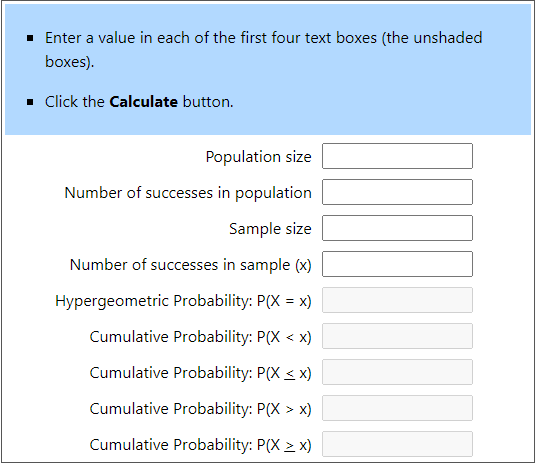
Do you mulligan a two-land hand on the play with only 3-drops in it? Do you keep a one-land hand on the draw with a perfect curve? Have you ever gambled on finding a specific card by using your resources to draw a few cards to see if it’s there? How can you confidently make these decisions?
Today I’ll provide a tool to solve these problems by teaching the basics of hypergeometric calculation. I have this Stat Trek calculator bookmarked on my browser because of its wide application to Magic. As I mentioned, this tool is useful to solve for the chances of finding a specific card or subset of cards in a grouping of cards.
Using a Hypergeometric Calculator
The Basics
Let’s say you need to draw a white mana source in the first three cards to have a functional opening hand, and your deck has 18 sources left in it.
There are 53 cards left in your deck (population size), 18 white sources (number of successes in population), three chances to draw it (sample size), and you need to draw one (number of successes in sample). The calculator spits out a few numbers if you want to know the chances of drawing fewer than, equal to, or greater than one white source. You’re “successful” with 1 or more white mana so you mostly care about the final number, which is the probability of finding at least one.
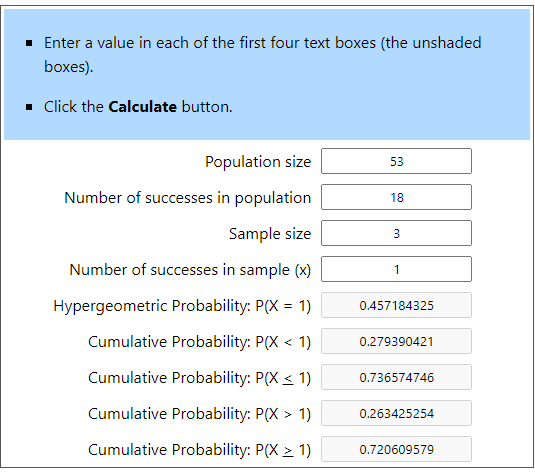
In this instance you have a 72% chance to find your mana. Not bad for a gamble, but 28% of games being unplayable is probably too high for my tastes if your hand relies on white mana to be functional.
Let’s look at another case. You’re playing Sealed and your opening hand is six lands plus the best card in the deck, a 6-mana bomb that should win the game if you can play it without being terribly behind. You think about your deck’s construction and decide that you need to draw two creatures or removal spells in the top five cards to stabilize enough for your bomb to take over, and your deck plays 15 cards that fit the bill.

You’d have about a 77% chance to play a functional game in this case. Could be worth gambling, especially the more you know about the compilation of your opponent’s deck and the speed of the format.
But it could be useful to look at this problem from another angle. Let’s say you lose if you draw three lands in the top five. With 17 lands in the deck (11 remaining) there’s a 19% chance you flood to death.
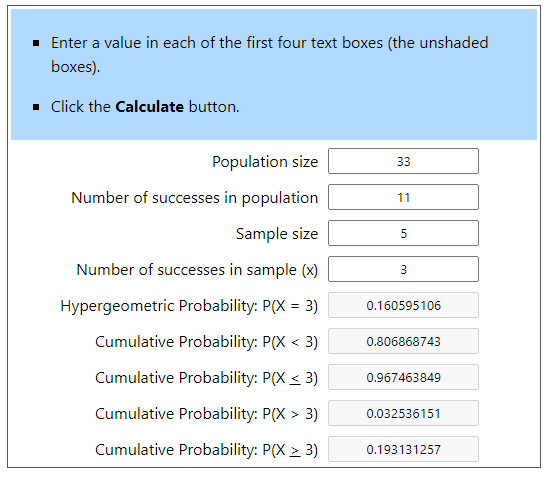
Ever since the advent of the current London Mulligan system I think it’s worth looking for better hands when your fail cases are so high. But if you’ve already mulligan-ed, weigh your options. If a hand’s fail case is around 20% but the alternative is mulligan-ing to five cards, it could be much more likely that you win the gamble than with an average 5-card hand.
Splashing
This tool is also useful in figuring out the impact of splashes in Limited. You’ve drafted an Azorius () deck with a powerful card you want to splash, but you didn’t draft any mana fixing. You figure the format is slow and you’ll see at least half your deck each game.
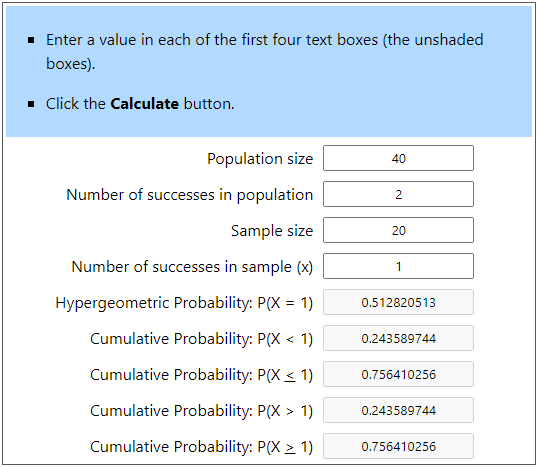
Let’s say you splash with two Swamps and play eight each of your main colors. You’ll be able to cast the card in a little over 75% of the games you draw it. But what if you found a single piece of mana fixing in the draft?

Your odds of casting your splashed card improve to around 88% with 1 extra black source. This is a compelling argument to prioritize mana fixing in slower draft formats!
Another common situation when splashing is opening a hand with your splash card, but no mana to cast it. Let’s say you’re playing Crimson Vow Sealed and splash Edgar, Charmed Groom in a Golgari () deck. You have one Plains, one Evolving Wilds, one Foreboding Statue, and one Honored Heirloom to help cast it. Your opening hand has Edgar and 3 lands, but no white mana. What are the odds you can cast it on curve?
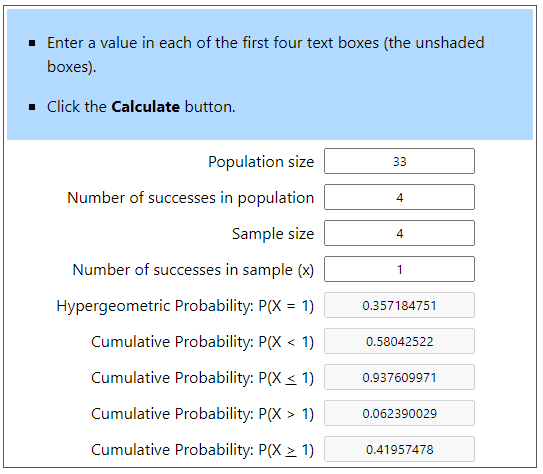
You’ll see four new cards before turn 4 if you’re on the draw, giving you about a 42% chance to find white mana in time. Edgar is a very strong card that doesn’t need to be cast on curve to have impact, so let’s look at the chance of finding it during an average game.
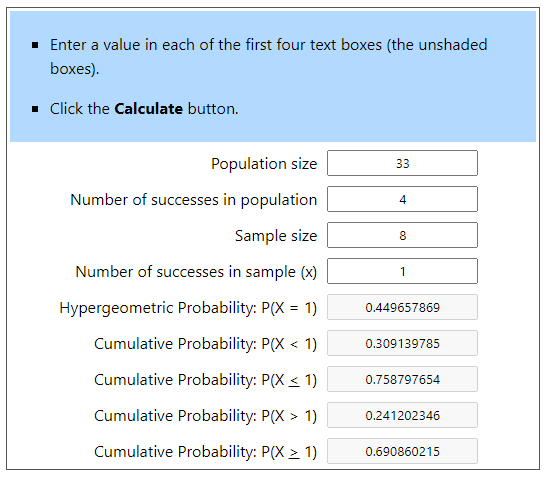
VOW is a fast format, so let’s assume you have 8 looks to find white mana before the game develops to a point where it doesn’t matter anymore. In this case you have a 69% chance to cast Edgar.
Nice.
Collected Company
Collected Company is a popular strategy on MTGA. It can be useful to know your odds of success when you cast it, so how would you calculate that?
Creature (28)
Lunarch Veteran x3
Selfless Savior
Skyclave Apparition x2
Soul Warden x4
Heliod, Sun-Crowned x4
Trelasarra, Moon Dancer x4
Voice of the Blessed x4
Ranger-Captain of Eos x2
Scurry Oak x4
Instant (4)
Enchantment (4)
Land (24)
Branchloft Pathway x4
Castle Ardenvale x2
Forsaken Crossroads
Overgrown Farmland
Plains x8
Sunpetal Grove x4
Temple Garden x4
Sideboard (15)
Ajani, Strength of the Pride x2
Cleansing Nova
Declaration in Stone x2
Dromoka's Command x2
Giant Killer
Gideon Blackblade
Rest in Peace
Skyclave Apparition x2
Thalia, Guardian of Thraben x2
Yasharn, Implacable Earth
Let’s use a list from the Hooglandia Open as an example. The strategy with this deck is to assemble Scurry Oak, Heliod, Sun-Crowned, and either Lunarch Veteran or Soul Warden to produce infinite +1/+1 counters and tokens. You’ll have part of the combo and be looking for the other parts in most games where you cast Collected Company. Let’s say it’s your turn and you already cast Soul Warden and Heliod, Sun-Crowned. What are the odds your Company finds Scurry Oak?
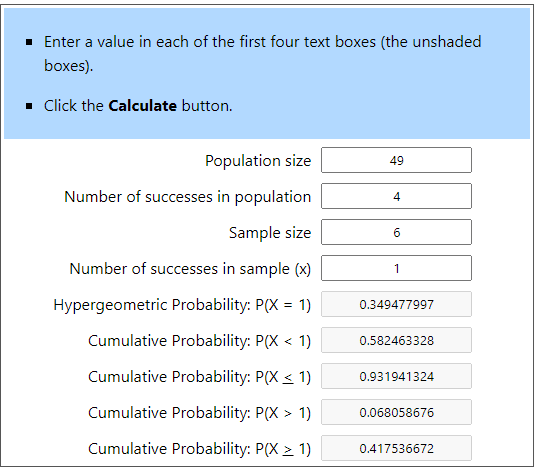
I chose 49 as the population size because that’s how many cards are usually left in your deck on turn 4 or 5. You have about a 42% chance to find your combo in this situation.
Wrap Up
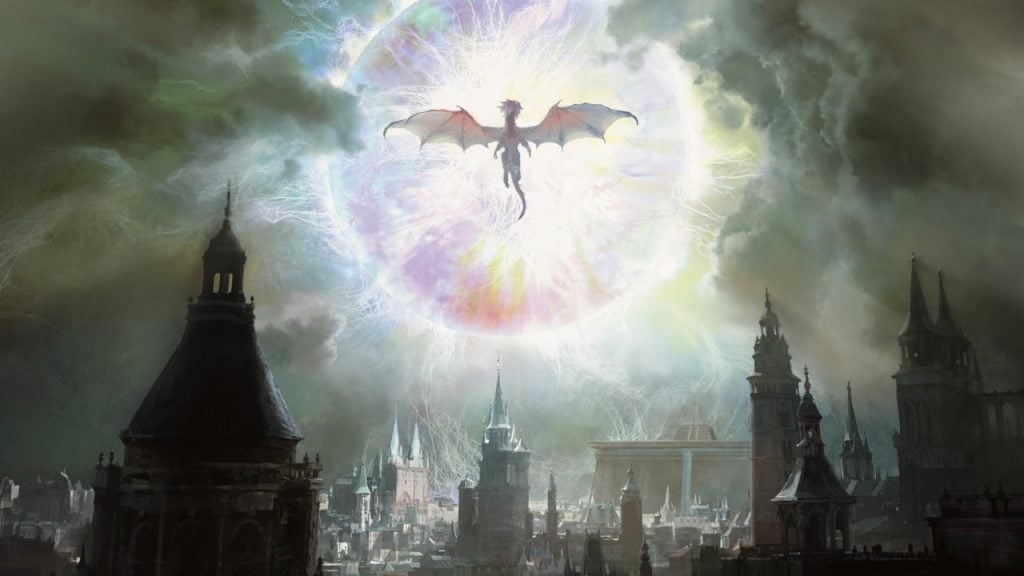
Finale of Promise | Illustration by Jaime Jones
Developing a more concrete understanding of MTG probabilities better informs your decision making. In my own Magic career, learning how to use the hypergeometric calculator immediately and significantly improved my game, and it continues to be an important tool that I regularly use.
Knowing the odds of common MTG occurrences and being able to calculate probabilities on the fly increased my decision confidence and streamlined my play. Understanding these odds also helped me across all facets of the game, from deck construction to draft decisions to choices in-game.
What are your thoughts on this calculator? Were you familiar with it at all, or is this your first time hearing about it? Let me know in the comments down below or find us over on Twitter.
I encourage you to play around with the calculator and become familiar with it. Next time you take a gamble in Magic, try plugging it into the calculator. Sometimes it’s not so much a gamble, it’s just mathematically correct!
Follow Draftsim for awesome articles and set updates:
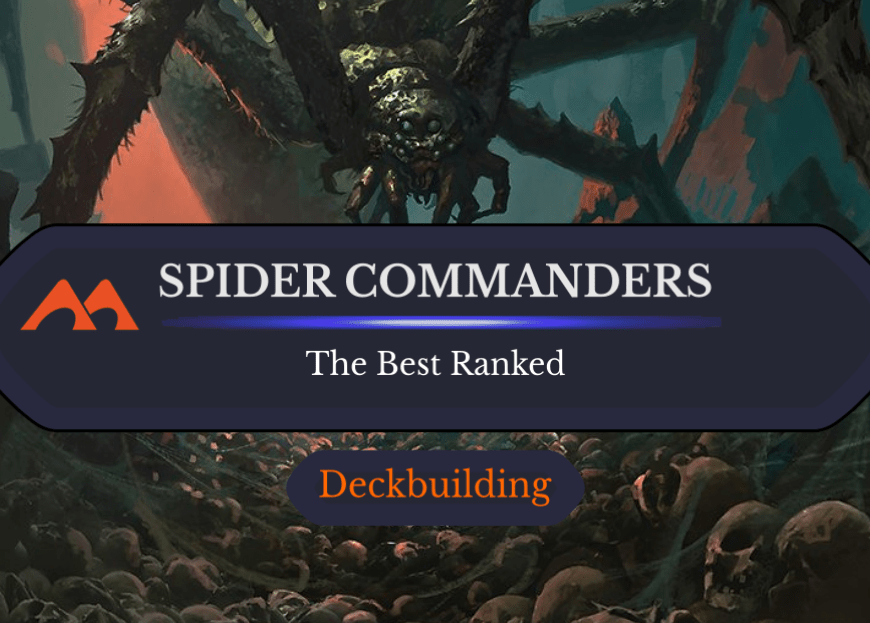
Add Comment